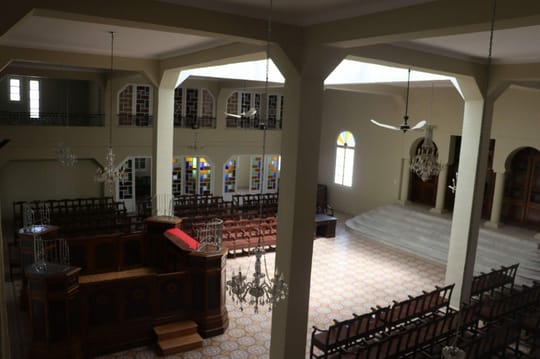Oujda, a city located in the extreme north-east of Morocco, is one of the areas in the country where a large Jewish community used to live back in the day. Their presence in the city dates back to the reign of Sultan Moulay Ismail (1672-1727). In 1948, the total Jewish population of Oujda numbered 9,000.
Jews who lived in Morocco throughout history came from various backgrounds: Jewish people who fled the Iberian Peninsula because of persecution, Imazighen who had been Judaized, or Jews who migrated from Algeria at the beginning of the French protectorate. Especially during the days of the protectorate, a lot of Jews were located in Oujda who came both from Algeria and other parts of Morocco. During the time of the protectorate, the Jews in Oujda went from having a dhimmi status, which meant they lived under the protection of the sultan in exchange for Jizya (protection tax), to become the subjects of the sultan.
The Mellah of Oujda
Oujda was the center for Moroccan Jewish migration given its location. Many Jews passed through this area while traveling to Israel. The majority of the Jewish community of Oujda was housed in the Mellah and Ouled Amran, another quarter of the city. The Mellah of Oujda differed from other Jewish quarters in Moroccan cities as it was not insular. Muslims were allowed to live in the neighborhood as well; Jewish houses stood aside from the Muslim ones.
The Great Synagogue
Situated in the city center, the Grand Synagogue of Oujda was built in 1930 and served as the main synagogue of Oujda ever since. The presence of the big building reminds visitors of Oujda of the Jewish community that used to live in the region. Thus, the synagogue still presents the pride of the Jewish community and can be visited by tourists with permission. Nowadays, the synagogue of Oujda is maintained and owned by the Jewish community of Morocco.
This article is part of the Heritage Month in Morocco campaign (April 18 – May 18) that celebrates the Kingdom’s rich heritage, as part of the USAID Dakira Program, which is implemented by the High Atlas Foundation and its partners. The program aims to strengthen inter-religious and inter-ethnic solidarity through community efforts that preserve cultural heritage in Morocco.
The article was completed with the support of the United States Agency for International Development (USAID), and the High Atlas Foundation is solely responsible for its content, which does not necessarily reflect the views of USAID or the Government of the United States.
